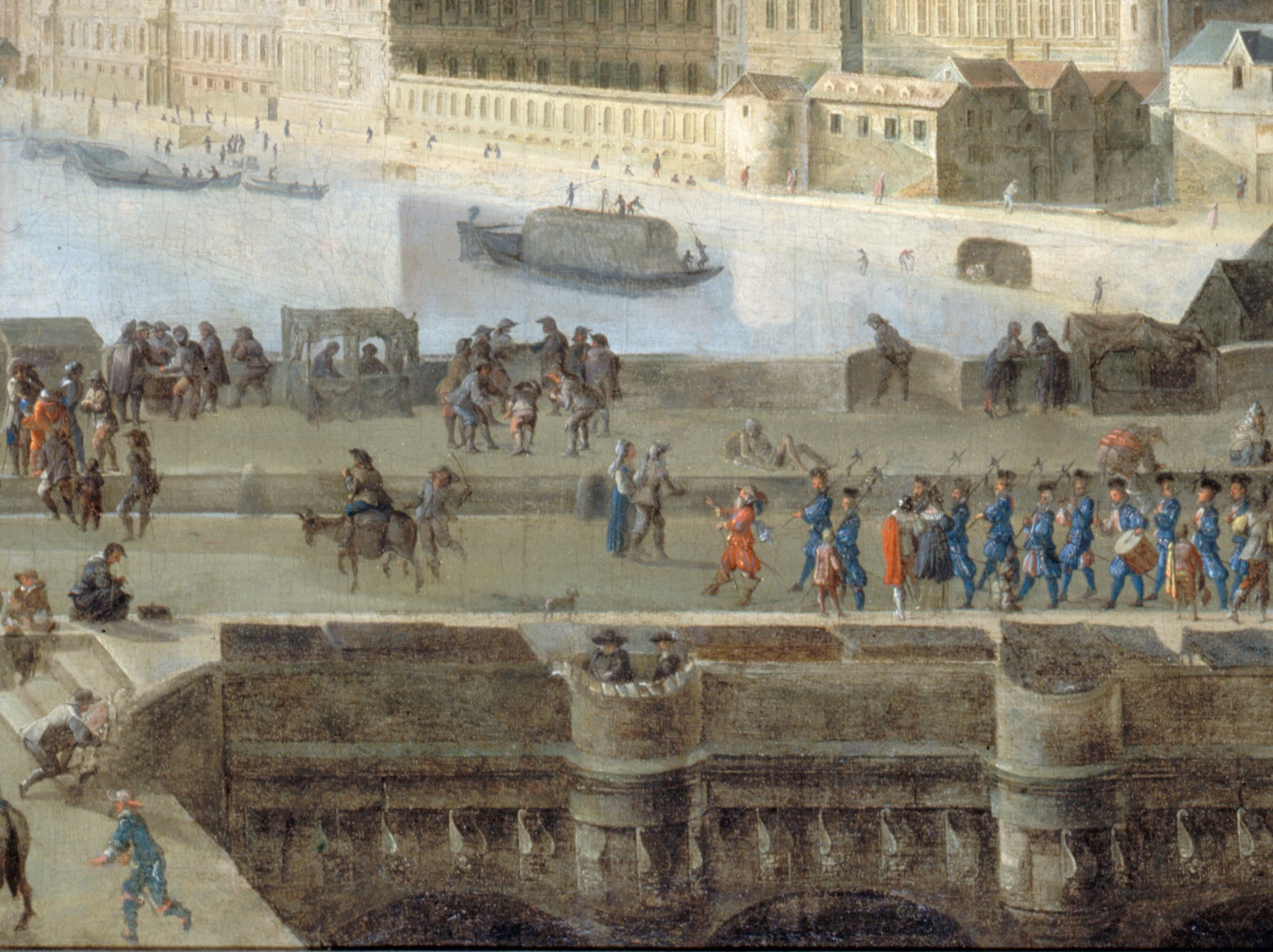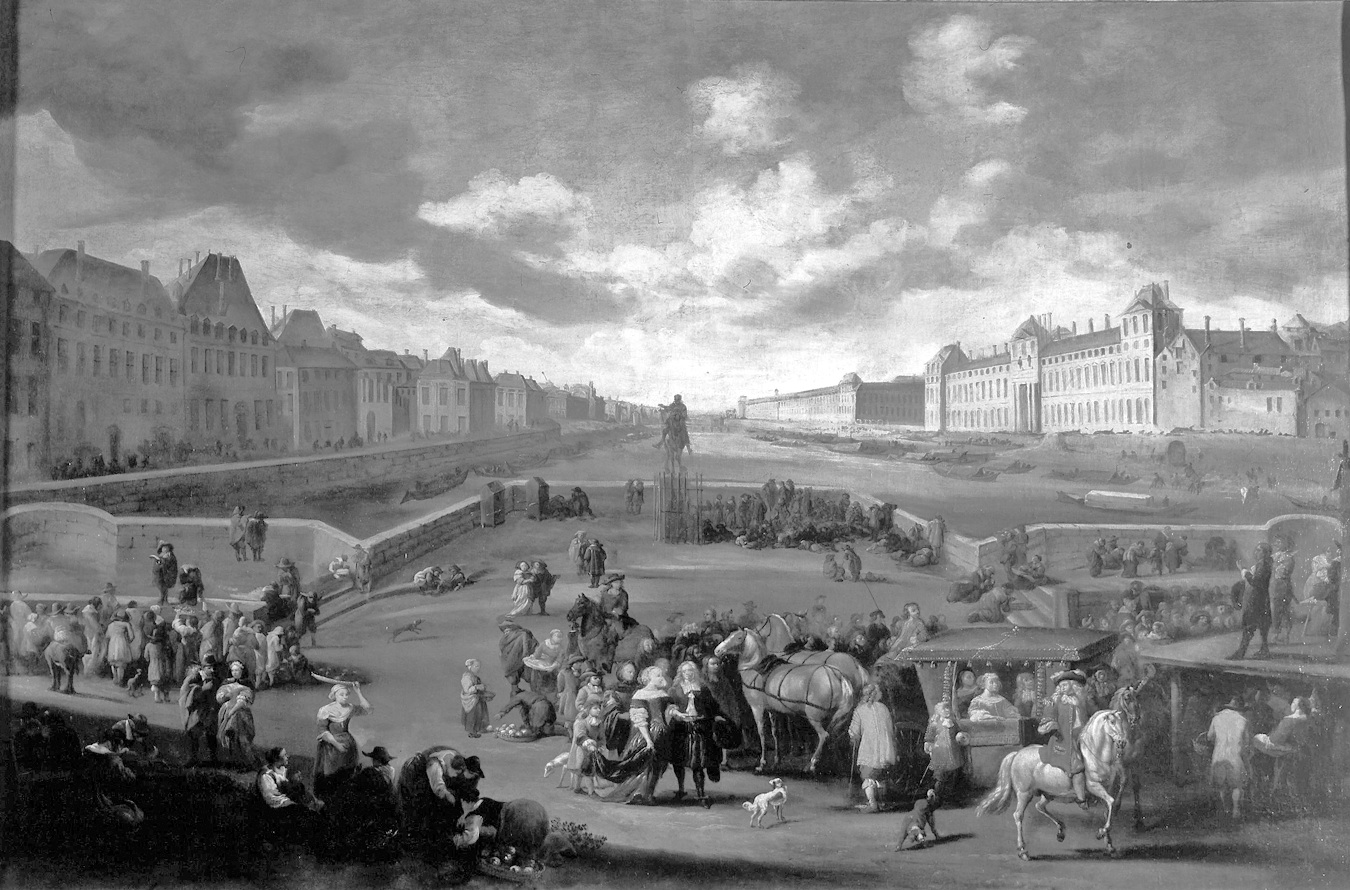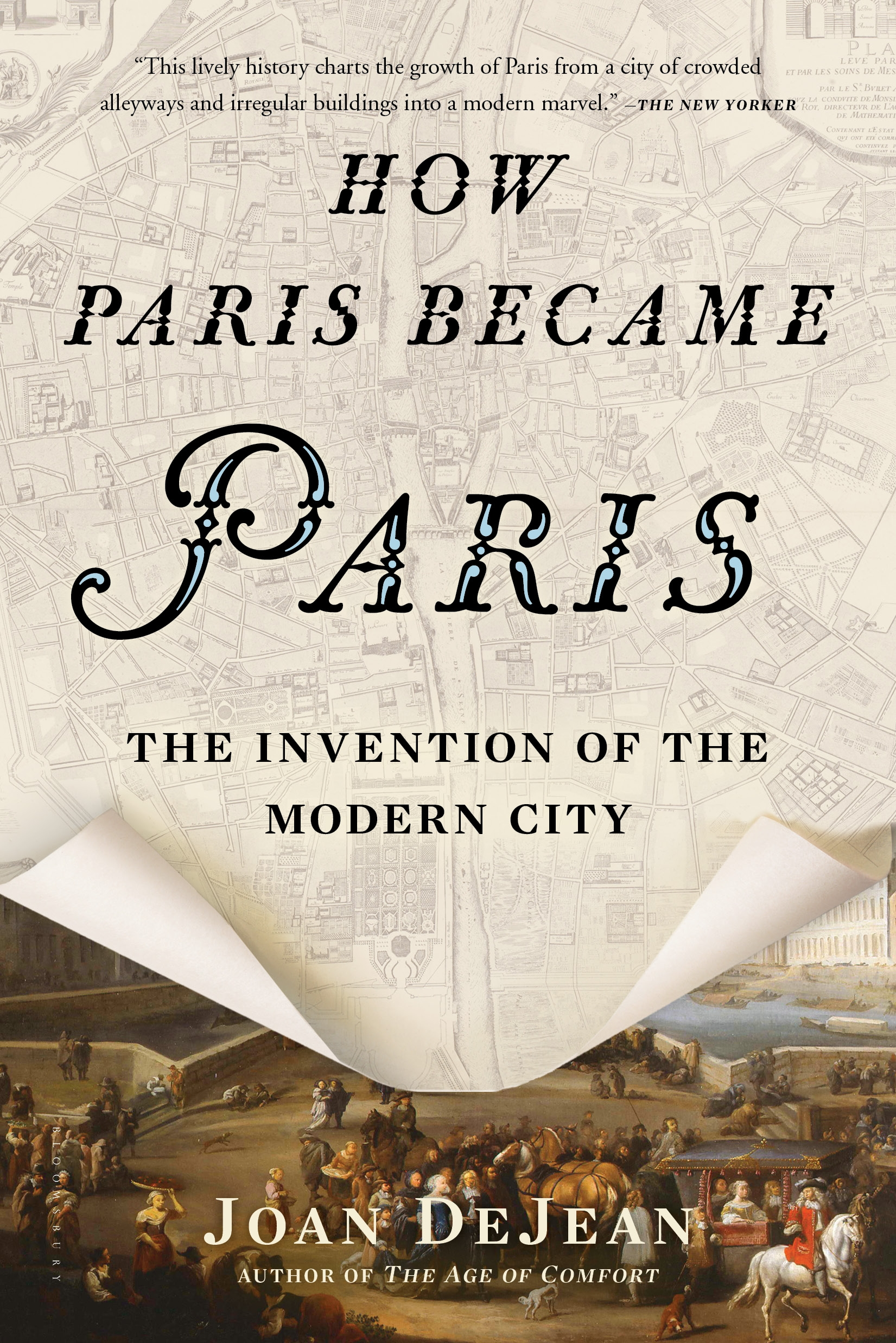By Joan Dejean (Guest Contributor)
 Today’s tourists would never consider a visit to Paris complete unless it included a stop on one of its famous bridges to admire the city from a perspective unlike any other. When they do so, they are taking part in a ritual now four centuries old.
Today’s tourists would never consider a visit to Paris complete unless it included a stop on one of its famous bridges to admire the city from a perspective unlike any other. When they do so, they are taking part in a ritual now four centuries old.
In this image from the 1630s, two men are standing on Paris’ then newest bridge, the Pont Neuf. As modern tourists still do, they are gazing out over the Seine marveling at the beauty of the river and of the city’s built fabric extending out into the distance.
The view from Paris’ bridges is justly fabled today – it’s hard to imagine how remarkable it must have seemed in the early 17th century, when it was brand-new, as was the case when the original river tourists, such as the two pictured here, took up their perch. François Bernier, world traveler and one of the most influential travel writers of the 17th century, rated the vista from the Pont Neuf “the most beautiful and the most magnificent view in the world.”
 Perhaps the panorama’s most remarkable aspect is the fact that every bit of it – from the bridge to the notable architecture that can be admired when standing on it – was not only very recent construction, but it had all been constructed in record time.
Perhaps the panorama’s most remarkable aspect is the fact that every bit of it – from the bridge to the notable architecture that can be admired when standing on it – was not only very recent construction, but it had all been constructed in record time.
In 1600, roughly a half-century before Dutch artist Hedrick Mommers painted this view of the Pont Neuf and the panorama of Paris, none of it yet existed. The city was still emerging from decades of war between Protestants and Catholics. Its cityscape, like its economy, was in ruins. But by 1650 all that destruction had been put firmly in the past, as Mommers’ canvas clearly shows. In the course of a mere century, Paris was transformed. By the end of the 17th century, Paris had become a city people dreamed of visiting and had acquired the reputation it has enjoyed ever since: that of being an almost magical place.
I wrote How Paris Became Paris because I wanted all those who love Paris today to know that so many of its characteristic wonders and marvels were introduced not in the 19th century by Baron Haussmann as is now so often said, but a full two centuries earlier. By 1700, Paris had already become Paris.
 Joan Dejean is Trustee Professor at the University of Pennsylvania. She is the author of ten books on French literature, history, and material culture, including The Age of Comfort: When Paris Discovered Casual and the Modern Home Began and The Essence of Style: How the French Invented High Fashion, Fine Food, Chic Cafés, Style, Sophistication, and Glamour.
Joan Dejean is Trustee Professor at the University of Pennsylvania. She is the author of ten books on French literature, history, and material culture, including The Age of Comfort: When Paris Discovered Casual and the Modern Home Began and The Essence of Style: How the French Invented High Fashion, Fine Food, Chic Cafés, Style, Sophistication, and Glamour.
